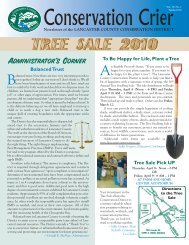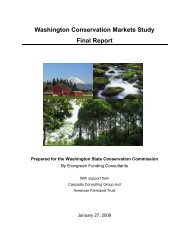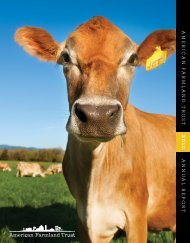Farms for the Future: Massachusetts - American Farmland Trust
Farms for the Future: Massachusetts - American Farmland Trust
Farms for the Future: Massachusetts - American Farmland Trust
You also want an ePaper? Increase the reach of your titles
YUMPU automatically turns print PDFs into web optimized ePapers that Google loves.
<strong>Massachusetts</strong>’ Investments in <strong>Farmland</strong> Conservation· The 2002 Census of Agriculture data reportthat, from 1997 to 2002, <strong>the</strong> total acreageof land in farms in <strong>Massachusetts</strong> declinedannually on average by nearly 12,000 acres.The Census does not indicate whe<strong>the</strong>r or notthis land has been developed. Like <strong>the</strong> 2003Annual NRI data, more recent estimates from<strong>the</strong> National Agricultural Statistics Servicesuggest that <strong>the</strong> rate of land leaving agriculturalproduction may be abating. 15 New 2007Census data are expected in February 2009.· There are significant regional variations infarmland loss. The 2002 Census reports thatPlymouth County saw <strong>the</strong> largest drop inland in farms from 1997 to 2002, with a27 percent decline in farm acreage. Bristol,Hampden, Hampshire and Worcester countieseach experienced more than a 10 percentdrop in farm acreage.<strong>Farmland</strong> Af<strong>for</strong>dabilityThe Commonwealth’s shrinking base of workinglands has enormous repercussions <strong>for</strong> a naturalresource-based industry whose profitabilitydepends on a stable source of productive land.Competing demands on farmland <strong>for</strong> housing andcommercial development have dramaticallyincreased farm real estate values over <strong>the</strong> pastdecade from $6,200 per acre in 1997 to $12,200per acre in 2008. 16 While <strong>the</strong> escalating value offarmland represents a valuable asset on <strong>the</strong> farmbalance sheet and a vital nest egg <strong>for</strong> retiringfarmers, it is also making it increasingly difficultto establish or expand a farm operation.The average per-acre farm real estate valuein <strong>Massachusetts</strong> is $12,200, <strong>the</strong> highestin <strong>the</strong> country. 17Farmers across <strong>Massachusetts</strong> rely on rented land.According to <strong>the</strong> 2002 Census of Agriculture,109,000 acres of land in farms in <strong>the</strong> state arerented or leased by farmers from non-farminglandowners. 18 While <strong>the</strong> Census does not indicatewhat type of land this is, assuming it islargely cropland and pasture land, rental landwould account <strong>for</strong> over 40 percent of <strong>the</strong>Commonwealth’s total land in crops or pasture.Land owned by non-farming landowners can beespecially vulnerable to conversion to nonagriculturaluses, especially if passed on to heirswho have little connection to ei<strong>the</strong>r <strong>the</strong> land or to<strong>the</strong> farmer working it.Farm Expenses and Income<strong>Massachusetts</strong> farmers pay over $360 millionannually in production expenses. Farm expensesin <strong>the</strong> Commonwealth have risen sharply in <strong>the</strong>past decade. From 1997 to 2002, average productionexpenses increased by a staggering27.5 percent. Partially as a result of risingexpenses, <strong>the</strong> same five-year period saw a steepdrop in net farm income, from an average perfarm of $24,000 to an average of $11,000. Morerecent estimates suggest a upward turn in net farmincome—from $94 million in 2002 to $131 millionin 2005—but a continued escalation of farminput costs such as feed and energy. 19The average per-acre property tax paid by<strong>Massachusetts</strong> farmers is <strong>the</strong> fourth highestin <strong>the</strong> nation. 20Several factors contribute to <strong>the</strong> high costs offarm production expenses in <strong>the</strong> Commonwealth.Because of agriculture’s dependence on fuel, highenergy costs have a significant impact on farming.<strong>Massachusetts</strong> ranks eighth in <strong>the</strong> U.S. <strong>for</strong> overallenergy prices, which are 30 percent higher than<strong>the</strong> national average. 21 Rising land values havealso contributed to higher expenses. Land renthas increased—from 1997 to 2002 <strong>the</strong> per farmaverage increased by 20 percent while <strong>the</strong> numberof renters paying $10,000 or more annually increasedby 38 percent. Property taxes, too, havehad an impact.High production expenses have encouraged<strong>Massachusetts</strong> farm businesses to develop retailmarket opportunities and value-added products tomaintain profitability. As a result, <strong>the</strong> state’s farmslead <strong>the</strong> way in <strong>the</strong> growing direct-to-consumermovement. In fact, <strong>Massachusetts</strong> ranks first in<strong>the</strong> nation <strong>for</strong> <strong>the</strong> value of direct market sales perfarm, at $24,900—over 2.5 times that of <strong>the</strong> U.S.average. Worcester County ranks fourth among allcounties in <strong>the</strong> U.S. <strong>for</strong> <strong>the</strong> value of direct sales ofagricultural products to consumers, at nearly$5 million. 22<strong>American</strong> <strong>Farmland</strong> <strong>Trust</strong>5


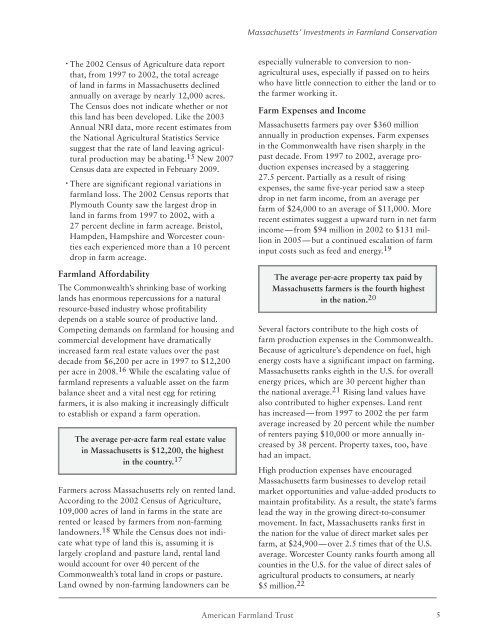
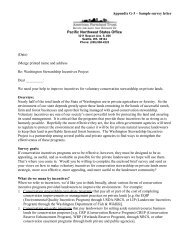

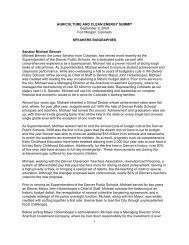
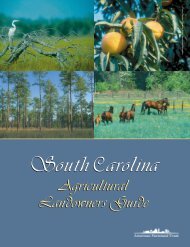
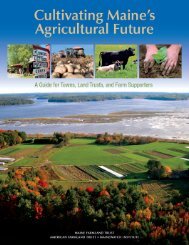
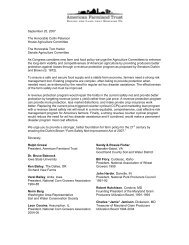
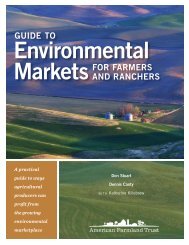
![Farmland by the Numbers [PDF] - American Farmland Trust](https://img.yumpu.com/31549391/1/190x245/farmland-by-the-numbers-pdf-american-farmland-trust.jpg?quality=85)


